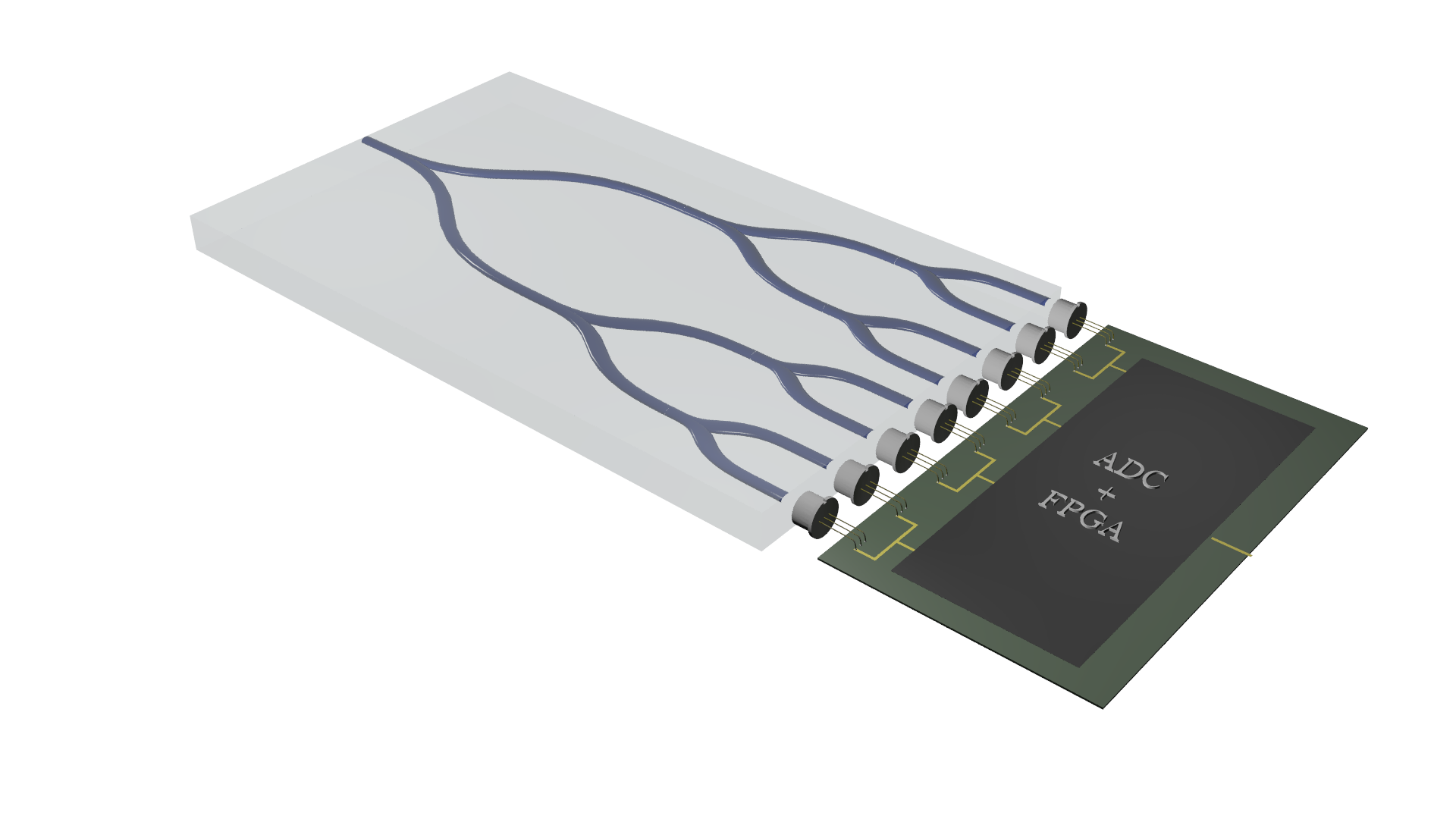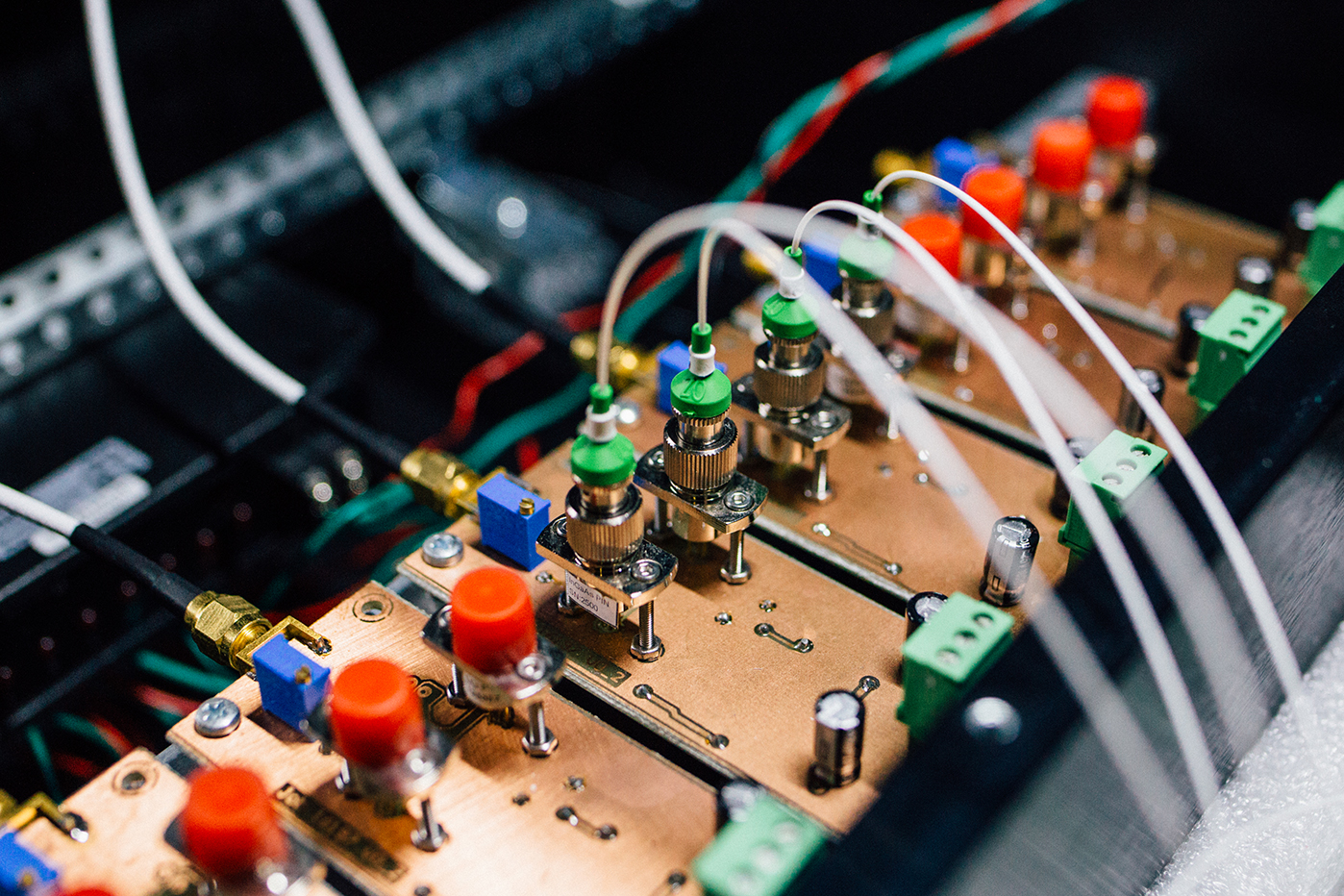
Multiplexed Quantum Random Number Generation via Vacuum Fluctuations
- Post by: admin
- 12:02PM Nov 27, 2017
- Comments off
Random number generators are incorporated in applications ranging from cryptography to computer simulation and lottery systems. Modern random number generators typically utilise complex computer algorithms to hash an initial pseudo-random value. As one might guess, if the initial seed value is known, the random string of bits produced may be compromised. For applications such as cryptography, where security and high randomness is important these pseudo-random number generators are flawed.
Quantum random number generators (QRNGs) utilise the intrinsic randomness of quantum mechanical processes to generate truly random numbers. Whilst quantum random number generation with vacuum fluctuations has been successfully demonstrated, these generators are still limited in their capabilities, such as poor generation bitrate .

Optical fibres coupled into balanced homodyne detector array.

Schematic of Lithium Niobate waveguide device used to generate 32 output beams from single source.
As our source for randomness we measure small fluctuations of the electromagnetic vacuum field using balanced homodyne detectors. These balanced homodyne detectors are able to measure the quadrature statistics of the vacuum field via the subtraction of two coherent laser beams. Each analogue signal from the homodyne detectors is digitised and processed real-time in parallel using fast, programmable electric circuits.
Key to our experimental setup over previous works is the incorporation of a Lithium Niobate waveguide device patterned such that a single input beam is split into 32 output beams allowing for the efficient multiplexing of many homodyne detectors. In implementing this multiplexed scheme, we aim to demonstrate an increase in bitrate over single homodyne detection configurations previously used.
[1] C. Gabriel et al. “A generator for unique quantum random numbers based on vacuum states”, Nature Photonics 4, 10 (10 2010), 711–715.
[2] T. Symul, S. M. Assad, and P. K. Lam, “Real time demonstration of high bitrate quantum random number generation with coherent laser light”, Applied Physics Letters 2011 98:23